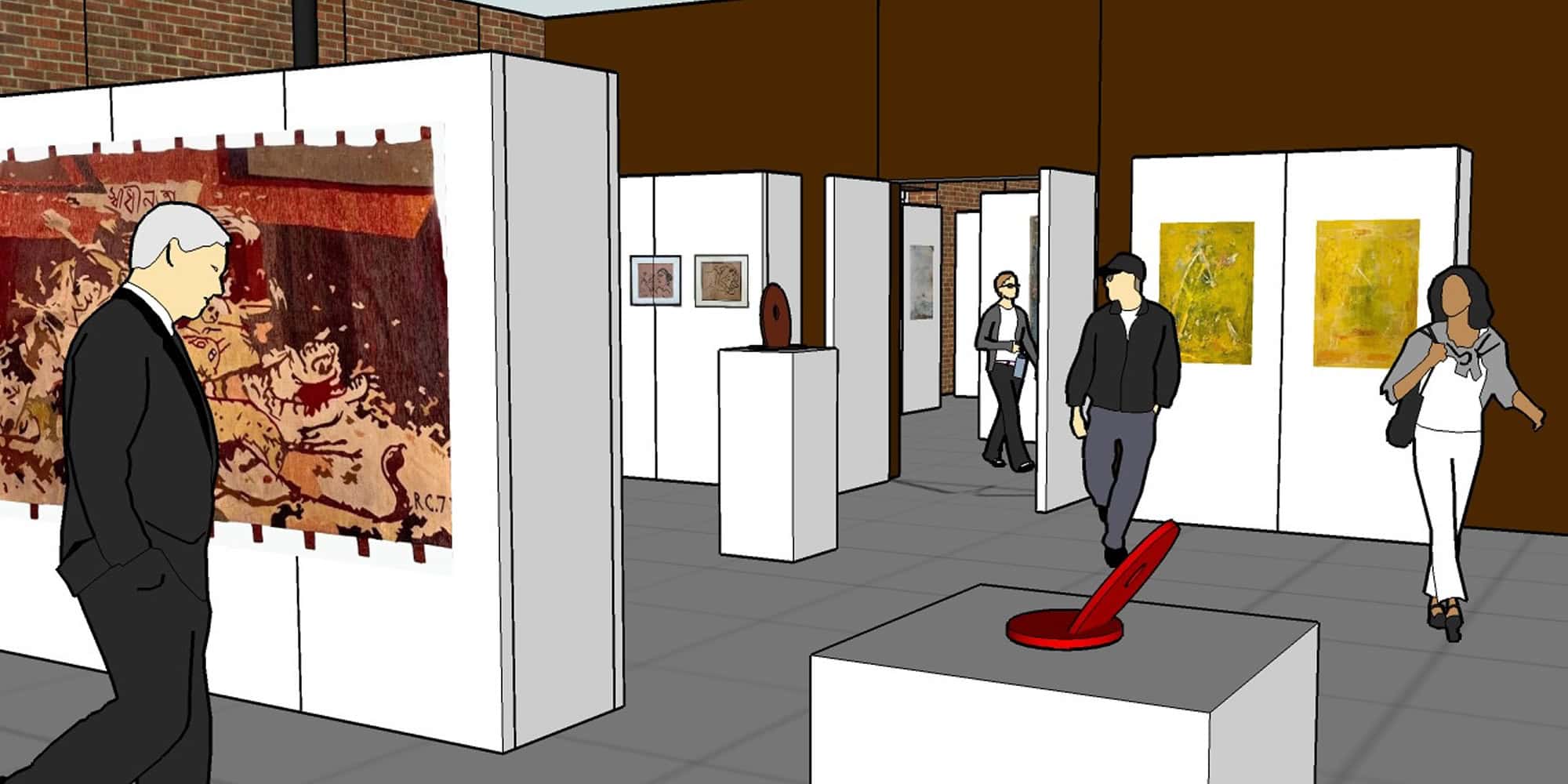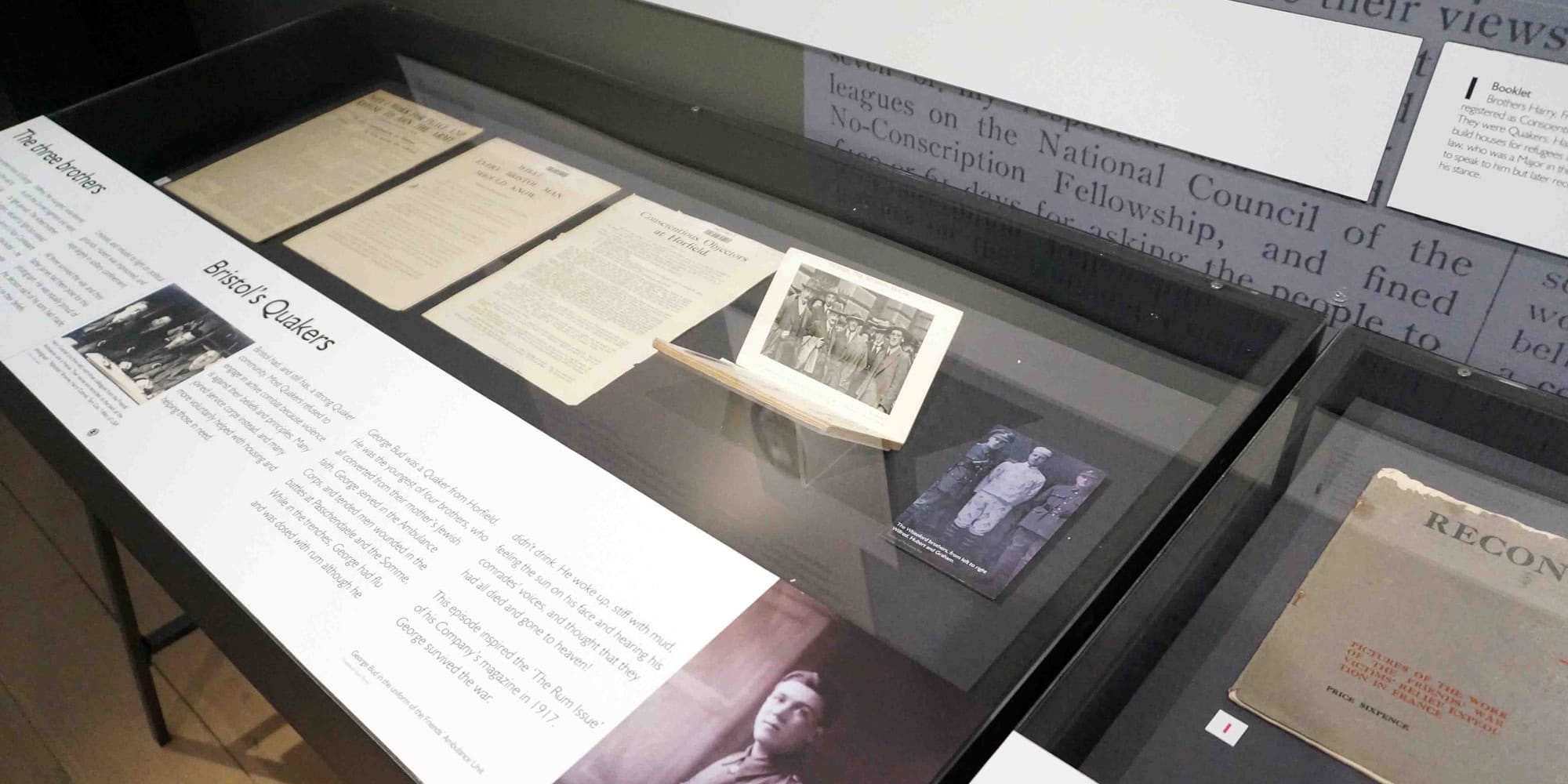TRAVELLING TREASURES
The Important Differences Between Permanent and Travelling Exhibits
In Part 3 of our article series on travelling exhibition design, we scrutinise the pivotal differences between permanent and travelling exhibits in-depth.
The distinction between permanent and travelling exhibits is foundational yet profound. While both aim to educate, inspire, and engage audiences, the methodologies and objectives that guide their creation are markedly different. Permanent exhibits are often designed to be fixtures within a museum’s gallery spaces, contributing to the institution’s long-term narrative and identity. In contrast, travelling exhibits are temporary installations that must adapt to various venues, cultures, and audience demographics as they often tour internationally. Understanding these differences is essential when creating unforgettable and unique visitor experiences.
The Fundamental Differences in Purpose and Structure
Purpose and Vision
Permanent exhibits serve as the cornerstone of a museum’s identity. We design such exhibitions to be part of the institution indefinitely, allowing for an enhanced, sustained engagement with the museum’s key themes and collections. They aim to create a long-term influence on visitors, building a foundation with the museum’s mission and narrative. This permanence allows for creating detailed displays that can be updated and maintained over time to reflect ongoing research and new acquisitions.
Travelling exhibits, on the other hand, are created with a different set of goals. Their primary purpose is to reach a broader and more diverse audience by touring different venues. These exhibitions are temporary by nature, with a limited time at each location. Their vision is to bring art, culture, and history to various parts of the world, often in places that may not have extensive art collections of their own. This approach boosts public engagement with art and history and strengthens cultural exchange and inclusivity.
Design and Development
The design process for permanent exhibitions allows a high degree of customisation to fit a specific gallery space within a museum. These exhibitions benefit from incorporating complex architectural elements, custom-built environments, and immersive multimedia installations that are moulded to the museum’s specific layout and context. The development process is often lengthy though, with a strong emphasis on permanence, durability, and the ability to withstand the rigours of time.
Conversely, designing a travelling exhibit requires a focus on flexibility and adaptability. The exhibitions must be modular and easily transportable, able to fit into various spaces with different dimensions and layouts. The design must consider the ease of installation (and dismantling), often relying on lightweight materials and portable display systems. This necessity for adaptability does not mean a compromise on quality; rather, it demands innovative solutions that balance visual impact with practicality. Our goal is to create an exhibition that can capture the audience’s attention and convey its message effectively, regardless of the setting.

The Differences in Visitor Experience and Engagement
Interaction and Immersion
Permanent exhibits have the advantage of creating immersive environments that can truly engage visitors in a fun manner. These exhibitions can employ sophisticated lighting, soundscapes, and impressive interactive elements that enhance the visitor experience (see our article: AI in museums ). The consistency of the environment allows for creating a cohesive narrative that visitors can explore at their own pace, often leading to a more profound and reflective experience.
While also aiming to be immersive, travelling exhibits must achieve this within the constraints of their limited temporary nature. The challenge lies in creating an impactful and engaging experience that can be set up and equally taken down quickly. This often means using versatile, scalable design elements that can be adapted to different locations and gallery spaces. Despite these constraints, we design travelling exhibits that can be highly innovative and find new ways to connect and educate diverse audiences. The temporary characterisation can actually increase their public appeal, creating a sense of urgency and excitement among audiences who know they have a limited time to enjoy the exhibition.
Audience and Accessibility
Permanent exhibitions are predominantly tailored to the museum’s regular audience, including local visitors, members, scholars and everyday tourists. The design and content of these exhibitions often reflect the specific interests and demographics of the museum’s typical visitors. Thematic exhibits of Egyptian mummies and dinosaur discoveries are most people’s cup of tea. This focus allows for a more profound evaluation of themes and collections, creating a comprehensive visitor experience.
Travelling exhibits, by contrast, must appeal to a wide and varied audience as they tour different locations. This requires a careful balance between universal appeal and specific local relevance. These exhibitions must be inclusive, accessible, and engaging to diverse audiences, regardless of their cultural background or prior knowledge of the collection on display. The ability to reach new and different audiences is one of the most significant advantages of travelling exhibits, helping democratise much-needed access to art and culture.
The Contrasting Logistical Considerations and Challenges
Space and Adaptability
Permanent exhibits are designed with a specific, dedicated space in mind. This allows for combining complex structures, custom museum lighting, and permanent installations intricately tied to the museum’s architecture. The spatial design can be highly detailed and inviting, creating a permanent home for the displayed objects.
In contrast, travelling exhibits must be designed to fit into diverse gallery spaces, from substantial gallery spaces, such as The Louvre in Paris, to smaller community venues or visitor centres. This requires a high degree of adaptability in both design and structure. The exhibits must be modular, with components that can be easily adjusted to fit different spatial configurations. This adaptability is essential for maintaining the integrity and influence of the exhibit across various locations. The use of versatile display systems and adaptable lighting solutions helps ensure that the quality of the visitor experience remains consistent.
Transportation and Installation
The transportation of permanent exhibits is generally a one-time event, with the artefacts and installations designed to remain in place for a considerable period. This allows for using heavy, durable materials and intricate installations that might not be feasible in a travelling context.
Travelling exhibits, however, must be designed with transportation in mind. The objects and displays need to be ideally lightweight, durable, and easy to pack and unpack. This often means you should use robust and portable materials, such as high-quality lightweight panels, modular display cases, and portable lighting systems where possible. The logistics of transportation, including shipping, customs, and handling, are significant considerations in the design and planning process. This is especially true if your touring exhibition travels internationally. Ensuring that the exhibits can be safely and efficiently transported between venues is critical to the success of a great travelling exhibition.
Impact and Legacy Differences
Cultural Influence and Educational Value
Permanent exhibits contribute to the museum’s long-term educational and cultural objectives. They provide a stable and enduring resource for educators, researchers, and the public. These exhibits’ universal qualities allow for a comprehensive audit of the museum’s art collections and thematic displays.
While temporary, travelling exhibits have a distinctive ability to extend the museum’s reach and influence. By touring different regions and countries, these exhibitions bring upcoming art and diverse cultures to new audiences, often in areas where access to such resources is unfortunately limited. The educational value of travelling exhibits is significant. These exhibitions can inspire cultural curiosity and a love of learning beyond the museum’s walls.
Economic Considerations
The economic model for permanent exhibits is based on the long-term investment in creating and maintaining a stable, enduring museum exhibition design. These exhibits hope to attract repeat visitors, members, and donors, providing a steady and important source of revenue for the museum.
Travelling exhibits, on the contrary, offer a different economic ambition. While the initial investment in creating a travelling exhibit can be substantial, the ability to tour multiple locations can spread the cost and generate revenue from various sources. Hosting institutions often pay fees to participate in the tour, and the increased visibility and engagement can furthermore heighten attendance, gift shop purchases, and donations.

The pivotal differences between permanent and travelling exhibits highlight their distinct purposes, designs, visitor experiences, and logistical considerations. Permanent exhibits ensure a comprehensive, sustained engagement within a museum’s space while travelling exhibits aim to reach diverse audiences through their adaptable nature. Both exhibit types contribute uniquely to the museum world, offering opportunities for meaningful and influential visitor experiences worldwide. Embracing these differences enables us as museum designers to create impactful engagements that educate, inspire, and engage audiences of all ages.
Read more on travelling exhibition design
Part 1 – Why Tour an Exhibition?
As part of this series, we explore the various reasons art collectors tour their collections or themed exhibits globally. Discover our comprehensive list here.
Part 2 – Designing a Travelling Exhibition
Employing this design methodology across all your exhibition venues allows you to discern the minimum, maximum, and optimal space necessary for your travelling exhibit.
